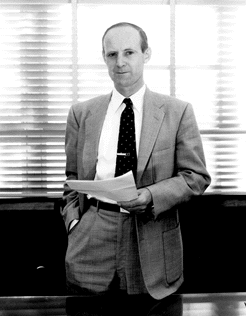Bill Pickering (rocket scientist) facts for kids
Quick facts for kids
Bill Pickering
ONZ
|
|
|---|---|

William H. Pickering, JPL/NASA Photo
|
|
| Born |
William Hayward Pickering
24 December 1910 Wellington, New Zealand
|
| Died | 15 March 2004 (aged 93) Flintridge, California, U.S.
|
| Citizenship | New Zealand, United States |
| Known for | Space aeronautics pioneering |
| Awards | Magellanic Premium (1966) IEEE Edison Medal (1972) National Medal of Science (1975) Delmer S. Fahrney Medal (1976) Japan Prize (1994) Daniel Guggenheim Medal (2000) |
| Scientific career | |
| Institutions | Jet Propulsion Laboratory |
| Thesis | A Geiger Counter Study of the Cosmic Radiations (1936) |
| Doctoral advisor | Robert A. Millikan |
William Hayward Pickering (born December 24, 1910 – died March 15, 2004) was a brilliant aerospace engineer. He was born in New Zealand. For 22 years, he led the Jet Propulsion Laboratory (JPL) in California. This lab is famous for building robots that explore space. Pickering was a key leader at NASA and helped start the amazing journey of space exploration. He also helped create the United States National Academy of Engineering.
Contents
Early Life and Learning
William Pickering was born in Wellington, New Zealand. This was on December 24, 1910. He went to school in Havelock and Wellington. After studying for a year in New Zealand, he moved to the United States. There, he became a US citizen.
He went to the California Institute of Technology (Caltech). He earned his bachelor's degree there. In 1936, he got his PhD in Physics. His special area was Electrical Engineering. He focused on 'telemetry', which means sending data over long distances. This skill was very important for space missions.
Leading the Jet Propulsion Laboratory
William Pickering joined the Jet Propulsion Laboratory (JPL) in 1944. This was during World War II. He became the Director of JPL in 1954.
Launching America's First Satellite
Under Pickering's leadership, JPL achieved something huge. They launched Explorer I on January 31, 1958. This was America's first satellite! It went into space on a Jupiter-C rocket. This happened less than four months after the Soviet Union launched their first satellite, Sputnik.
Exploring Space with NASA
In 1958, JPL's projects moved to National Aeronautics and Space Administration (NASA). Pickering's team then focused on sending unmanned spacecraft into space. These were robots, not people.
JPL, led by Pickering, sent more `Explorer` missions. One of these, Explorer 3, made a big discovery. It found a radiation field around Earth. We now call this the Van Allen radiation belt. Explorer 1 orbited Earth for 10 years. It paved the way for many successful satellites. These satellites explored both Earth and deep space.
Pickering's team also sent `Pioneer` missions. They launched `Ranger` and `Surveyor` missions to the Moon. The `Mariner` missions flew past Venus and Mars.
When Pickering retired in 1976, JPL was still making history. The Voyager program missions were about to launch. They would explore the outer planets. Also, Viking 1 was on its way to land on Mars.
It's important not to confuse William Hayward Pickering with William Henry Pickering. That William Pickering was an astronomer from a much earlier time.
Life After JPL
After retiring, Pickering continued to support science. He was a patron for a research group in New Zealand. This group was called the Nexus Research Group. He supported them from 1999 until he passed away.
He also supported the New Zealand Spaceflight Association. This group promoted learning about space travel. He was their patron from 1977 until his death.
Returning to Gifford Observatory
On March 25, 2002, Pickering helped reopen the Gifford Observatory. He was the special guest. He had often used this observatory when he was a student at Wellington College.
His Passing
William Pickering passed away on March 15, 2004. He was at his home in California. He died from pneumonia.
Awards and Recognition
William Pickering received many important awards for his work:
- In 1964, he received the Golden Plate Award.
- In 1966, he won the Magellanic Premium.
- In 1972, he was given the IEEE Edison Medal. This was for his work in telecommunications and spacecraft control. It also honored his leadership in exploring the solar system with robots.
- In 1975, President Gerald Ford gave him the National Medal of Science.
- He was made an honorary Knight Commander of the Order of the British Empire in 1975.
- In 1980, he was added to the International Space Hall of Fame.
- In 1979, he was inducted into the International Air & Space Hall of Fame.
- He received the Japan Prize in 1994.
- In 2003, he became an honorary member of the Order of New Zealand. This is the highest civilian award in New Zealand.
- Pickering was featured on the cover of Time magazine twice. This is rare for someone who isn't a politician.
Named in His Honor
Many things have been named after William Pickering:
- In 2009, a peak in New Zealand's Kepler Mountains was named Mount Pickering. This was to honor him during the International Year of Astronomy.
- Three roads in New Zealand are named after him: Sir William Pickering Drive in Christchurch, Pickering Crescent in Hamilton, and William Pickering Drive in Auckland.
- In 2018, the company Rocket Lab named a rocket launch "This one's for Pickering." This was to honor him.
- A small planet, 5738 Billpickering, is also named after him.
Images for kids





